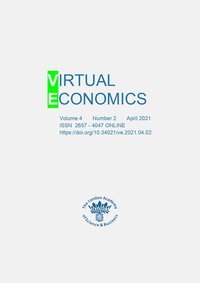The Organizational and Economic Mechanism of Implementing the Concept of Green Logistics
The Organizational and Economic Mechanism of Implementing the Concept of Green Logistics
Author(s): Henryk Dźwigoł, Nataliia Trushkina, Aleksy KwilinskiSubject(s): Energy and Environmental Studies, Transport / Logistics
Published by: The London Academy of Science and Business
Keywords: green economy; circular economy; green logistics; environmental logistics; greening of logistics activities; green technologies; logistics system; conceptual approach;
Summary/Abstract: The article analyses the preconditions for shaping and developing the concept of a green economy. The stages of the evolutionary development of the circular economy are considered: work with waste; environmental performance strategies; maximum conservation in the era of resource depletion. Having analysed the scientific opinions on the emergence of “circular economy”, the paper has found out that this concept is identified with the terms “round economy”, “cyclical economy”, “recovery economy”, “closed-cycle economy”, “green economy”. The approaches of different scientific schools to the category of “circular economy” are analysed and conventionally systematized into 12 groups: closed-cycle economy; renewable resource economy; alternative to traditional linear economy; global economic model; closed-loop economic system based on R-principles; the concept of economic development; sustainable development strategy; a "green" economy instrument; business philosophy; economic activity; use of production waste; recycling of secondary raw materials. There is proposed the authors' formulation of the circular economy as an innovative approach to organizing logistics processes based on the closed movement of resources with their minimum losses in the form of waste and the maximum involvement of secondary resources in production in order to achieve sustainable development of logistics systems. The article identifies the barriers preventing the implementation of the circular economy concept, among them being regulatory, institutional, economic, financial and investment, market, technological, informational, and cultural. The article considers the best practices of effective implementation of circular economy solutions on the example of Finland. The indicators of the development of the green technologies market in the world and the national logistics system of Ukraine under conditions of a circular economy are analysed. It has been established that many conceptual approaches to the definition of the terms “green logistics” and “environmental logistics” are generally accepted and have a broader meaning, without taking into account the functioning specificity of various spheres of economic activity, including transport and logistics. Scientific views on interpreting the essence and content of the concept "green logistics" are generalized. It is proposed to consider the term "green logistics" from three angles: a circular economy instrument; a component of business corporate social responsibility; and a type of economic activity aimed at reducing the negative impact on the ecosystem and the environment. In order to effectively implement the concept of green logistics, an organizational and economic mechanism has been developed, the main elements of which are: diagnostics of the current state, features and trends in the logistics systems' development, taking into account the environmental component; exogenous and endogenous factors affecting the development of logistics systems; risks in organizing the processes of logistics activities; subjects and objects of management, goals, objectives, principles, functions, tools, methods, management tools, information technology, criteria. The priority principles of forming an organizational and economic mechanism include consistency, integration, reliability, dynamism, compliance with the goals of sustainable development, and efficiency. A structural diagram of forming an organizational and economic mechanism for implementing the concept of green logistics is proposed, including the following blocks: management of material resources’ supplies and purchases; products manufacturing; warehousing and stocks; logistic flows; the risks of logistics activities; logistics service processes; recycling of waste; innovation and transformations. Introduction of the proposed organizational and economic mechanism will reduce the cost of managing the movement of logistics flows and increase the level of environmental safety. This is one of the most important requirements for implementing the concept of business corporate social responsibility in a circular economy.
Journal: Virtual Economics
- Issue Year: 4/2021
- Issue No: 2
- Page Range: 41-75
- Page Count: 35
- Language: English

